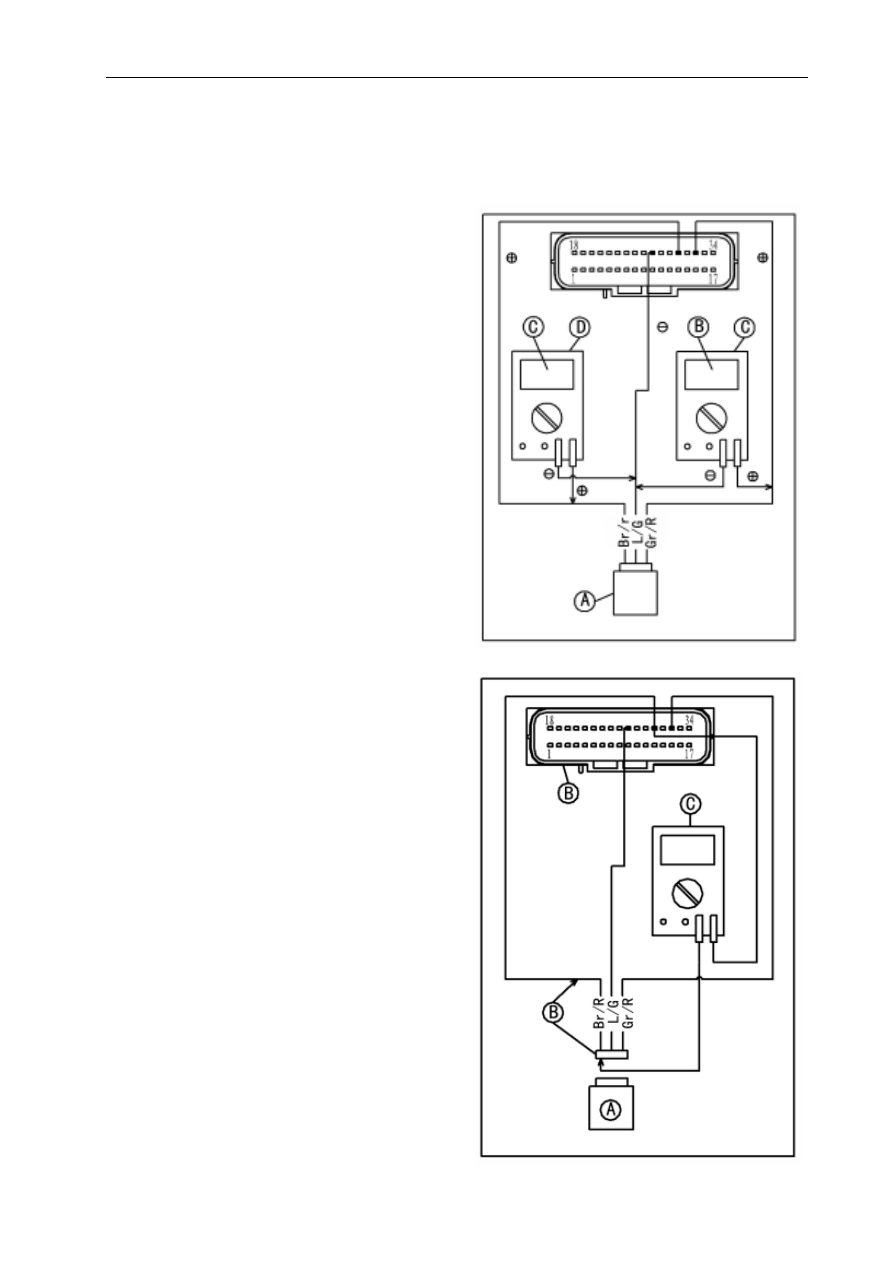CFMoto motorcycle CF650NK. Service Manual - part 14

FUEL SYSTEM (EFI) 3-17
EFI Servicing Precautions
O
Lead Color Codes:
B: Black L: Blue Gr: Grey
B: Brown G: Green Lg: Light green
Sb: Sky blue O: Orange R: Red
P: Purple W: White Y: Yellow
O
There are two ways to inspect the EFI system. One
is voltage Check Method and the other is Resistance
Check Method.
(Voltage Check Method)
O
This method is conducted by measuring the input
voltage [B] to a sensor [A] first, and then the output
voltage [C] from the sensor.
O
Sometimes this method can detect a fault of the
ECU.
o Refer to each sensor inspection section for detail in
this chapter.
o Use a fully charged battery and a digital meter [D]
which can be read two decimal places voltage or
resistance.
(Resistance Check Method)
o This method is simple. No need for a fully charged
battery and the needle adapter. Just do the follow
ing especially when a sensor [A] is suspect.
o Turn the ignition switch OFF and disconnect the
connectors.
o Inspect the sensor resistance, using a digital meter
(see each sensor inspection).
o Inspect the wiring and connectors [B] for continuity,
using the hand tester [C] (analog tester) rather than
a digital meter.
Special Tool - Hand Tester
If the sensor, the wiring and connections are good,
inspect the ECU for its ground and power supply
(see ECU Power Supply Inspection). If the ground
and power supply are good, the ECU is suspect.
Replace the ECU.